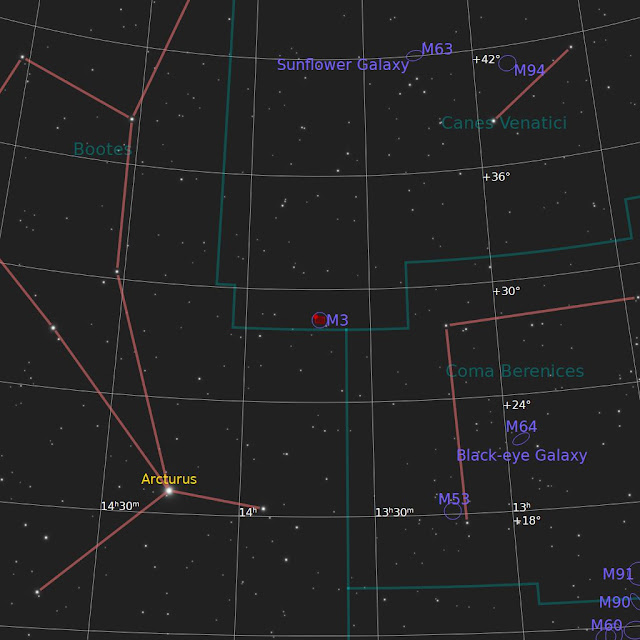Celestial Fireworks for Independence Day ...
Sunday 6/22/2025 was forecast to be clear. The first clear
night in quite some time. In fact, the following night, Sunday 6/23/2025, was
forecast to be clear too. Our club's astrophotography special interest group
(The Tuesday Night Imagers) decided to image on Sunday night. I was unable to
attend as Sunday is a work night, and this close to Solstice it gets dark
enough to image too late. I was able to Zoom from home and help with target
selection and set up of the imaging run. I dropped off the Zoom shortly after
the first few images started to roll in.
The group decided to go after NGC 6946, also known as The Fireworks
Galaxy. So close to New Moon, a broadband target like a galaxy is a great
choice for imaging. Also, this target is appropriate as it was imaged so close
to the US Independence Day Holiday (celebrated on the 4th of July)
which is celebrated with Fireworks displays. The team at the observatory was
able to capture 19 subs at 300 seconds each for a total exposure of 1 hour 35
minutes. This is my processing of the data.
 |
| An image of NGC 6946 (The Fireworks Galaxy) from the BMO on 06/22/2025 |
Processing:
All pre and post processing was performed in
PixInsight. Pre-Processing: All light Frames, Flats, Darks and
Dark flats were loaded into WBPP. Linear Post Processing: Background
extraction was performed with GraXpert followed by BXT (correct only). SPCC was
used for Color Calibration followed by a full application of BXT. The Stars
were removed using StarXT. Starless Linear: Noise was reduced
with NXT. The image was made non-linear with HT. Starless Non-linear
Post Processing: Saturation and intensity were increased with CT.
Exponential Transformation was used to increase the intensity. The Image Blend
script was used (with high pass filter) to increase sharpness. LHE was applied
at two different kernel radii and Unsharp Mask was applied (lightly). Stars Linear: The
Stars image was made non-linear with Seti Astro's Star Stretch script. Stars
Non-Linear: Saturation was increased with
CT. Starless: Intensity, and contrast were adjusted with various
applications of CT. The Stars and Starless images were combined with Pixel
Math to produce the final image
What is it?
NGC 6946 is also known as The Fireworks Galaxy because of
the high rate of supernovae observed in it compared to other galaxies. NGC 6946
is a “relatively close’ face on spiral galaxy.
 |
| An annotated image of NGC 6946 (The Fireworks Galaxy) |
How Big is it?
NGC 6946 has a size of 11.5 x 9. arcminutes (1 degree is 60
arcminutes) on the night sky. It is about 65,000 light years in diameter.
How Far is it?
NGC 6946 is located about 19 million light-years (ly) from
Earth.
How to find it?
NGC 6946 is located in the constellation Cygnus. Look
between Cygnus and the constellation Cepheus as shown by the small red square
in the Finder Chart below. This object is faint but can be observed visually.
Dark skies and large aperture are helpful in viewing this galaxy.
 |
| Finder Chart for NGC 6946 (The Fireworks Galaxy) |
Image Details:
Location: North Java, NY (Buffalo Astronomical Association's Beaver Meadow Observatory)
Telescope: Celestron 14" Edge HD w/0.7x Reducer
Camera: OGMA AP26CC
Filter: OGMA 2" UV/IR Cut
Mount: Astro Physics AP1200 Mount
Exposure: 19 exposures at 300 sec / Gain 100 / Offset 100 / -10° C each for a total exposure of 1 hour 35 minutes.
Software: NINA, PHD2, and PixInsight
Clear Skies!
Ernie







































